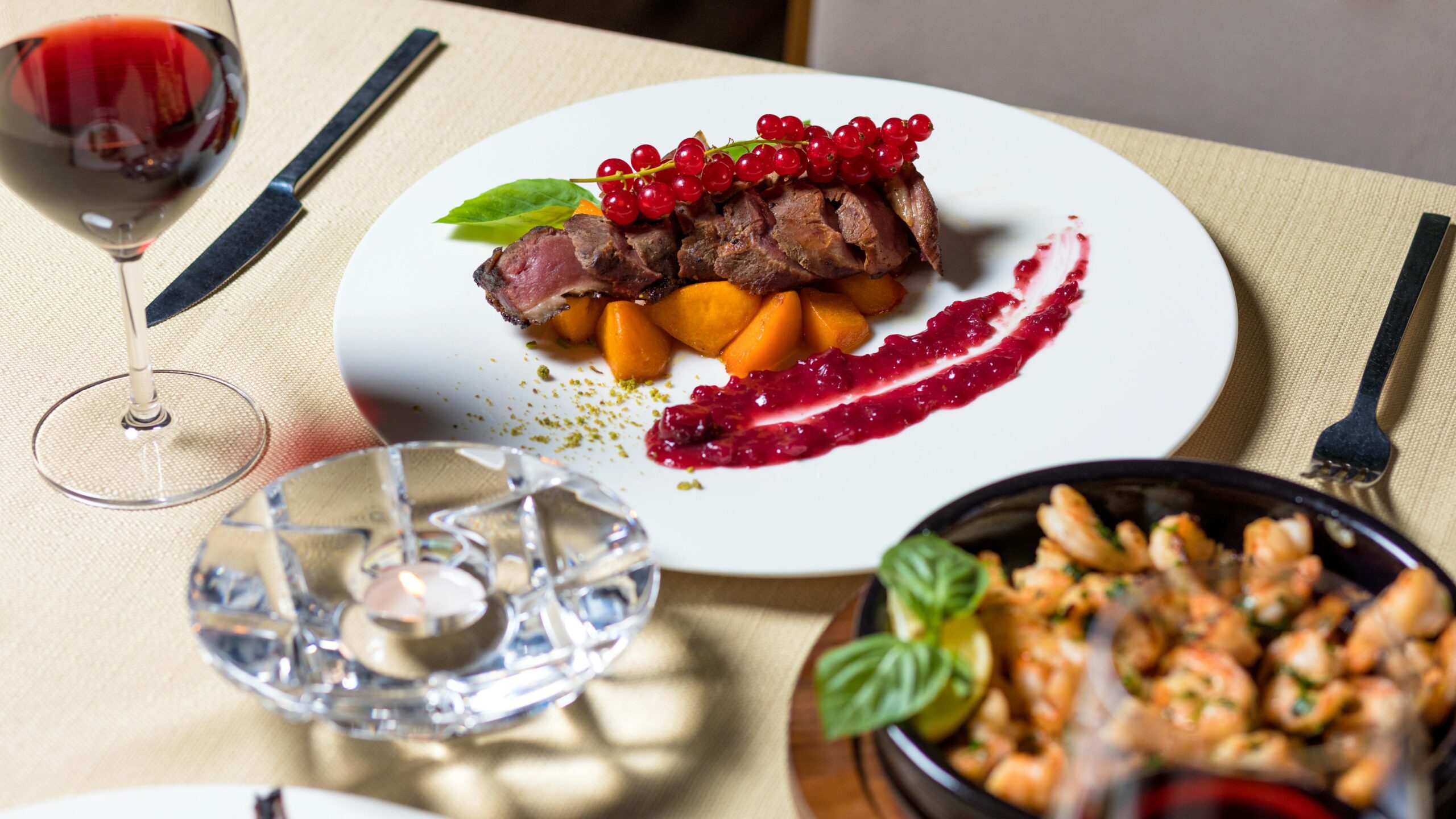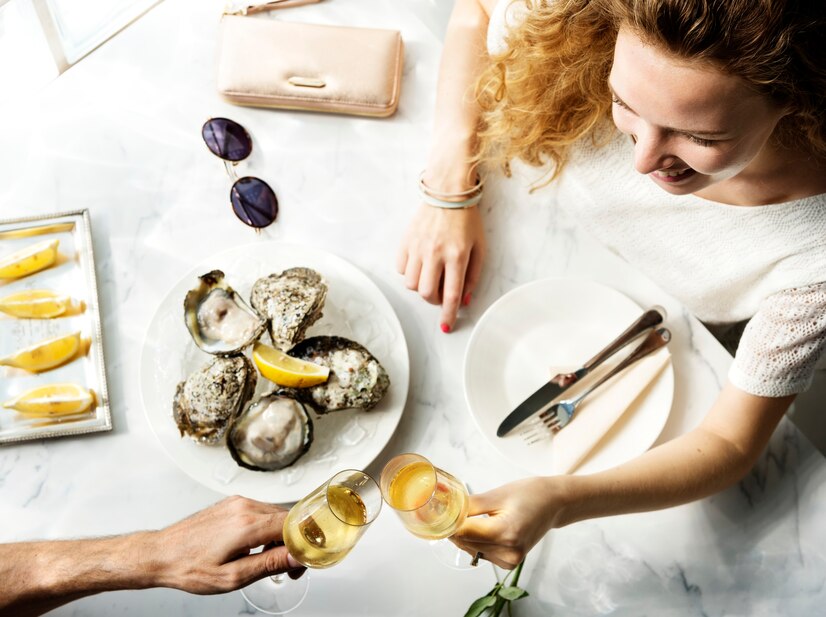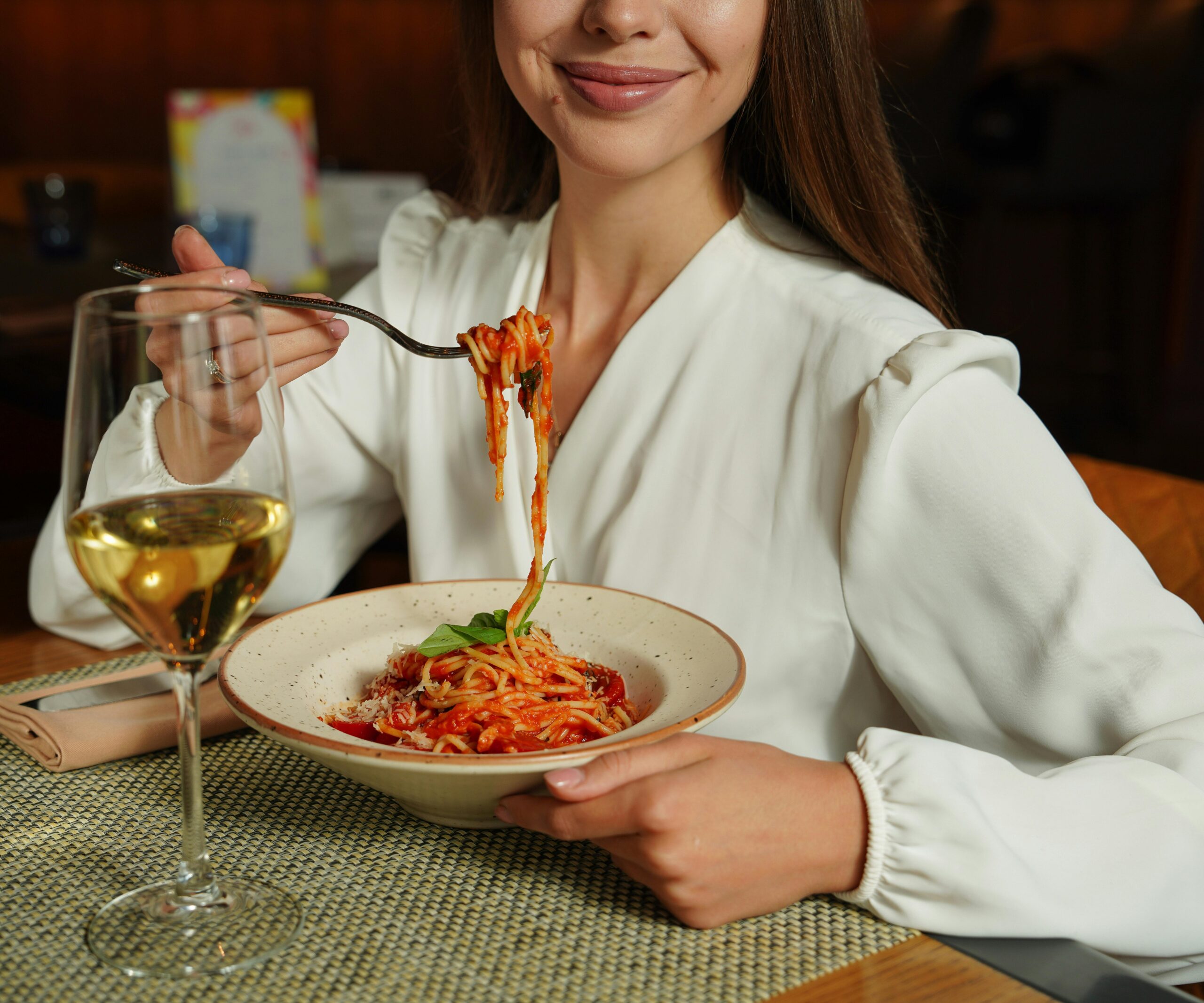
Red vs. White: When to Choose Each for Your Meal
When pairing red wine and white wine with food, it can be daunting trying to decide! Knowing each type’s traits and how they complement various foods can help bring your meals to the next level. You can be a seasoned sommelier or a total newbie. Don’t worry. Here are wine selection tips to help you pick the best wine for different foods.
Understanding the Differences Between Red and White Wine
1. Key Characteristics of Red Wine
Red wines are made from dark grape varieties. The skins are left on during fermentation, giving them a deep colour and tannic structure.
- Tannins: Provide structure and dryness, pairing well with rich, fatty foods and helping cleanse the palate.
- Acidity: Varies depending on the grape variety and region, with some reds being bright and fresh, while others are more rounded.
- Body: Typically full-bodied but can range from light (Pinot Noir) to bold (Cabernet Sauvignon).
- Flavour Profiles: Red wines often have dark fruit notes like blackberry, plum, and cherry. Their undertones are of spice, oak, or earthiness.
- Ageing Potential: Many red wines improve with age. They develop complex secondary flavours such as leather, tobacco, and dried fruit.
- Serving Temperature: Ideally served at 15-18°C (59-65°F) to enhance the balance of tannins and acidity.
2. Key Characteristics of White Wine
White wines are made from green or yellow grapes, with the skins removed before fermentation. This results in a lighter body and crisp acidity.
- Acidity: Higher acidity levels give white wines a refreshing quality. It makes them excellent for pairing with lighter dishes.
- Body: Ranges from light and zesty (Sauvignon Blanc) to full and creamy (Chardonnay).
- Flavour Profiles: White wines showcase citrus, green apple, peach, floral, and mineral notes. Oak-aged whites feature vanilla and buttery notes.
- Serving Temperature: Typically served chilled (7-12°C) to preserve freshness and balance acidity.
- Drinkability: Some whites age well, like Riesling or Chardonnay. Most are best enjoyed young to capture their vibrant fruitiness.
- Food-Friendly Nature: White wines tend to pair better with a broader range of foods. This is due to their crisp acidity and lighter tannin structure.
When to Choose Red Wine

1. Pairing Red Wine with Meat
Red wine’s tannins and body complement the richness of meat-based dishes.
- Beef & Lamb: Bold reds like Cabernet Sauvignon, Malbec, and Bordeaux blends pair well with steak, lamb chops, and braised short ribs.
- Game Meats: Earthy wines like Syrah/Shiraz, Nebbiolo, and Zinfandel enhance venison, duck, and wild boar.
- Pork Dishes: Medium-bodied reds pair well with pork tenderloin, roasted pork, and barbecue dishes. Pinot Noir, Tempranillo, and Grenache are a few of these medium-bodied reds.
2. Pairing Red Wine with Vegetarian Dishes
Although often associated with meat, red wine can also complement vegetarian dishes:
- Mushroom-Based Dishes: Earthy Pinot Noir, Merlot, or Sangiovese enhance risottos and grilled portobello mushrooms.
- Tomato-Based Pasta: Chianti, Zinfandel, or Barbera balances the acidity in tomato sauces.
- Hearty Legumes: Full-bodied reds pair well with lentil stews and black bean dishes. Tempranillo, Cabernet Franc, and Syrah are a few examples of full-bodied reds.
- Root Vegetables: Rich reds like Grenache and Carmenère work well with roasted carrots, beets, and sweet potatoes.
3. Red Wine and Cheese Pairings
- Cabernet Sauvignon: Aged cheddar, Gouda, Parmesan.
- Pinot Noir: Brie, Gruyère, Comté.
- Zinfandel: Blue cheese, Manchego, Roquefort.
- Syrah/Shiraz: Smoked cheddar, aged Gouda.
When to Choose White Wine

1. Pairing White Wine with Seafood
White wines’ crisp acidity enhances the delicate flavours of seafood.
- Shellfish: Chablis (unoaked Chardonnay) pairs well with oysters, crab, and shrimp.
- Grilled Fish: Sauvignon Blanc, Albariño, or Vermentino complement light, flaky fish like cod and sole.
- Rich Fish Dishes: Chardonnay, Viognier, or Roussanne pair beautifully with salmon or creamy seafood pasta.
- Sushi & Raw Fish: Riesling, Grüner Veltliner, or Champagne bring out the freshness of sushi and sashimi.
2. Pairing White Wine with Poultry & Vegetarian Dishes
- Roast Chicken & Turkey: Buttery Chardonnay, Chenin Blanc, or Viognier enhance the richness of roasted poultry.
- Spicy Asian Cuisine: Off-dry Riesling, Gewürztraminer, or Pinot Gris balance heat and spice.
- Salads & Light Pasta: Pinot Grigio, Grüner Veltliner, or Verdejo pair well with fresh vegetables and pesto dishes.
- Cheese & Herb-Based Dishes: Crisp whites like Sauvignon Blanc complement goat cheese and fresh herbs.
3. White Wine and Cheese Pairings
- Sauvignon Blanc: Goat cheese, feta, or ricotta.
- Chardonnay: Brie, Camembert, or triple-cream cheese.
- Riesling: Havarti, Swiss cheese, or semi-hard cheese.
- Moscato: Mascarpone or blue cheese with honey.
When to Consider Both Red and White Wines

Some dishes work well with either red or white wine. It depends on the preparation and seasoning.
- Pasta Dishes:
- Creamy pasta – White wine like Chardonnay, Viognier, or Chenin Blanc.
- Tomato-based pasta – Red wine like Sangiovese, Montepulciano, or Barbera.
- Cheese Boards:
- Light cheeses pair better with white wine, while aged or strong cheeses suit red wine.
- A balanced cheese board can include both wine types for a versatile pairing.
- Fusion Cuisine:
- You can mix bold spices and fresh ingredients. Then, a versatile wine like Rosé or an aromatic white can bridge the gap.
- Brunch & Light Meals:
- Eggs and light dishes pair well with Champagne, Prosecco, or light Pinot Noir.
Common Mistakes When Choosing Wine
Avoid these common pitfalls to enhance your wine and food experience:
- Overpowering the dish – Full-bodied reds can overwhelm delicate seafood.
- Ignoring acidity – Acidic foods (e.g., citrus-based dishes) need high-acid wines.
- Serving wine at the wrong temperature – Whites should be chilled. Reds should be slightly below room temperature.
- Not considering personal preference – Ultimately, the best pairing is one you enjoy!
- Forgetting about sweetness levels – A dry wine may clash with a sweet dish. So consider residual sugar content.
- Mismatching boldness – Light-bodied wines can be lost against robust, spicy dishes.
Red vs White Wines
Choosing between red wine vs white wine can confuse some people. It all depends on the dish, flavour intensity, and personal taste. You can also learn wine selection tips and determine the best wine for different foods. Then, you can confidently select the perfect pairing for any meal.
Next time you’re planning a meal, consider these tips and experiment with new pairings. Do you have a favourite wine and food combination? Share it in the comments below!